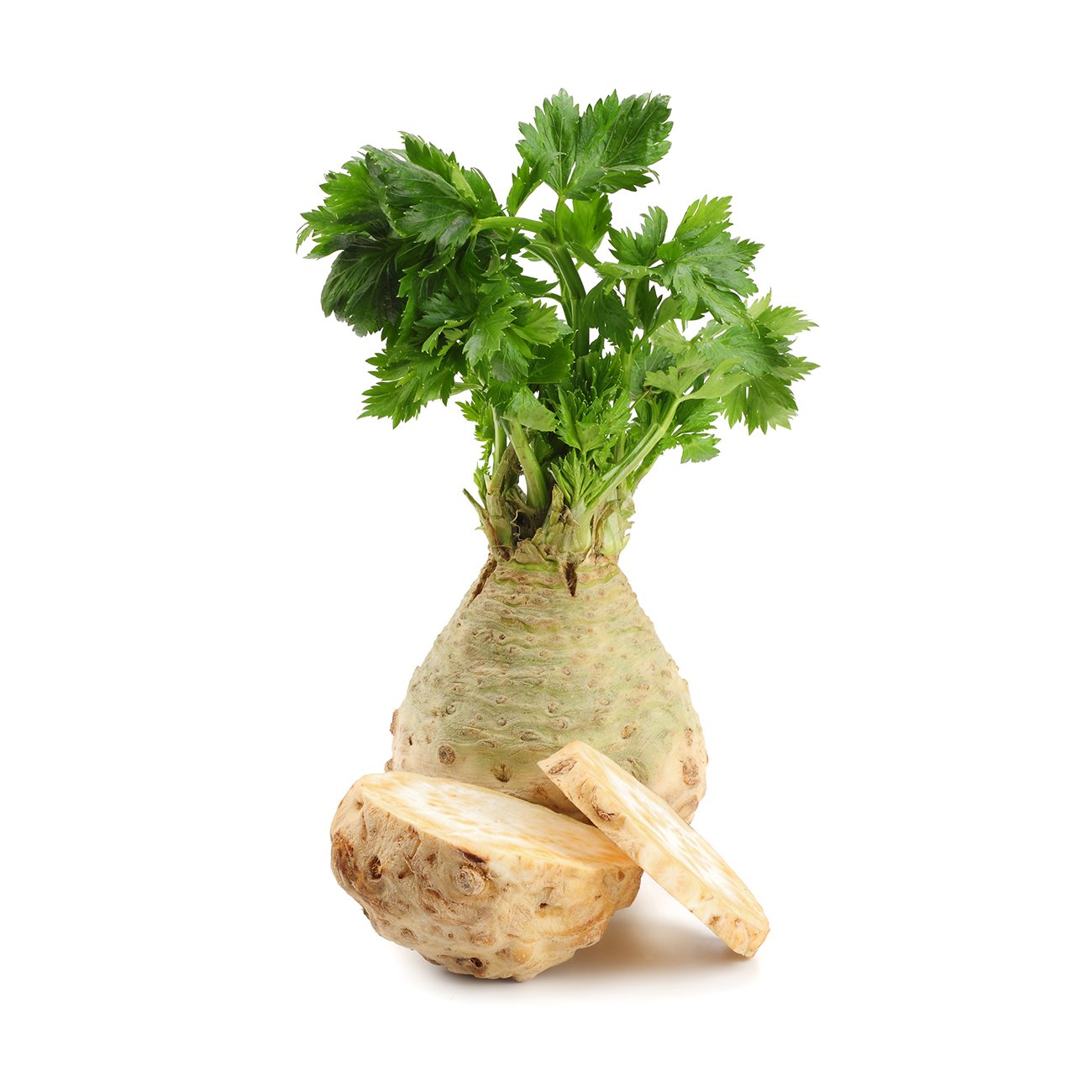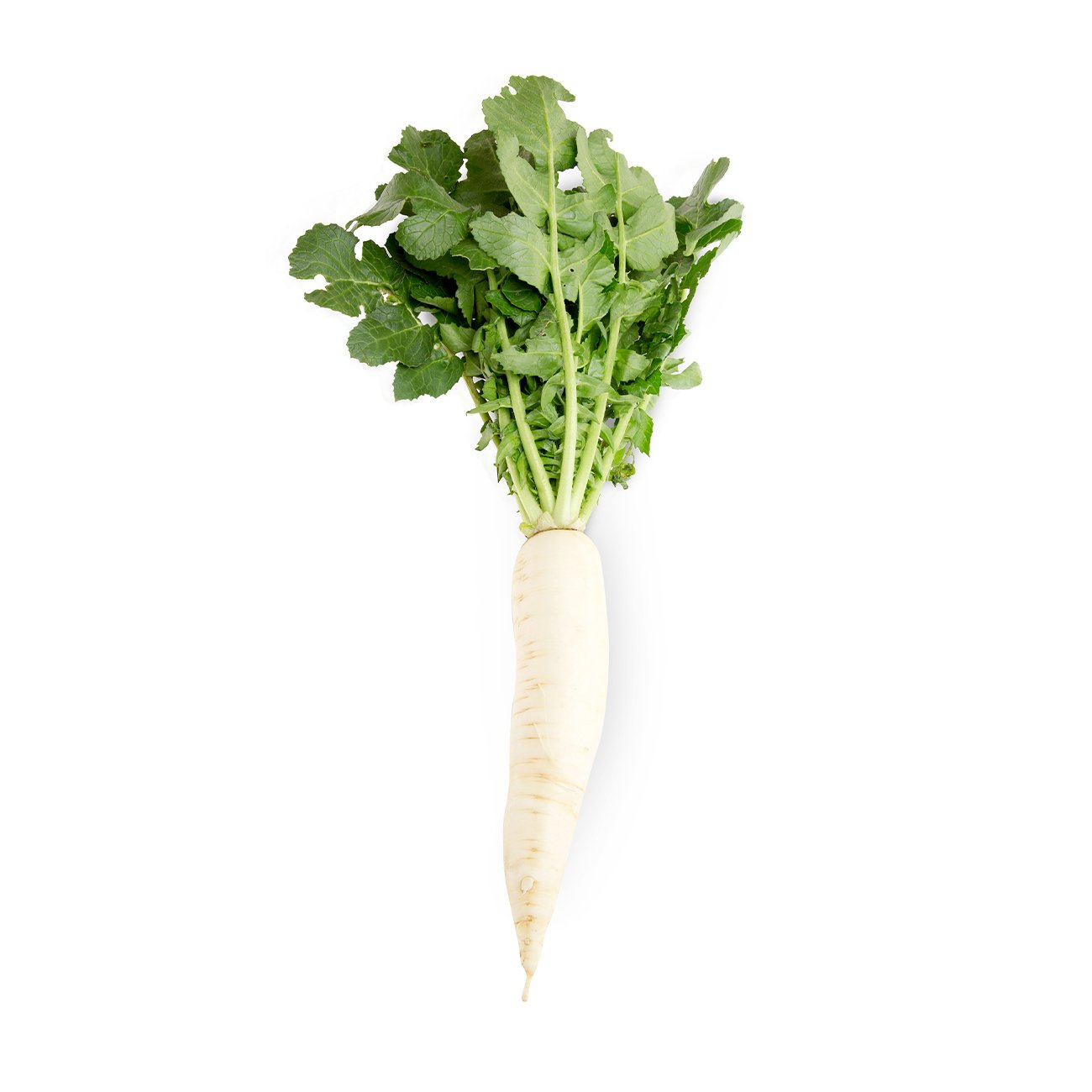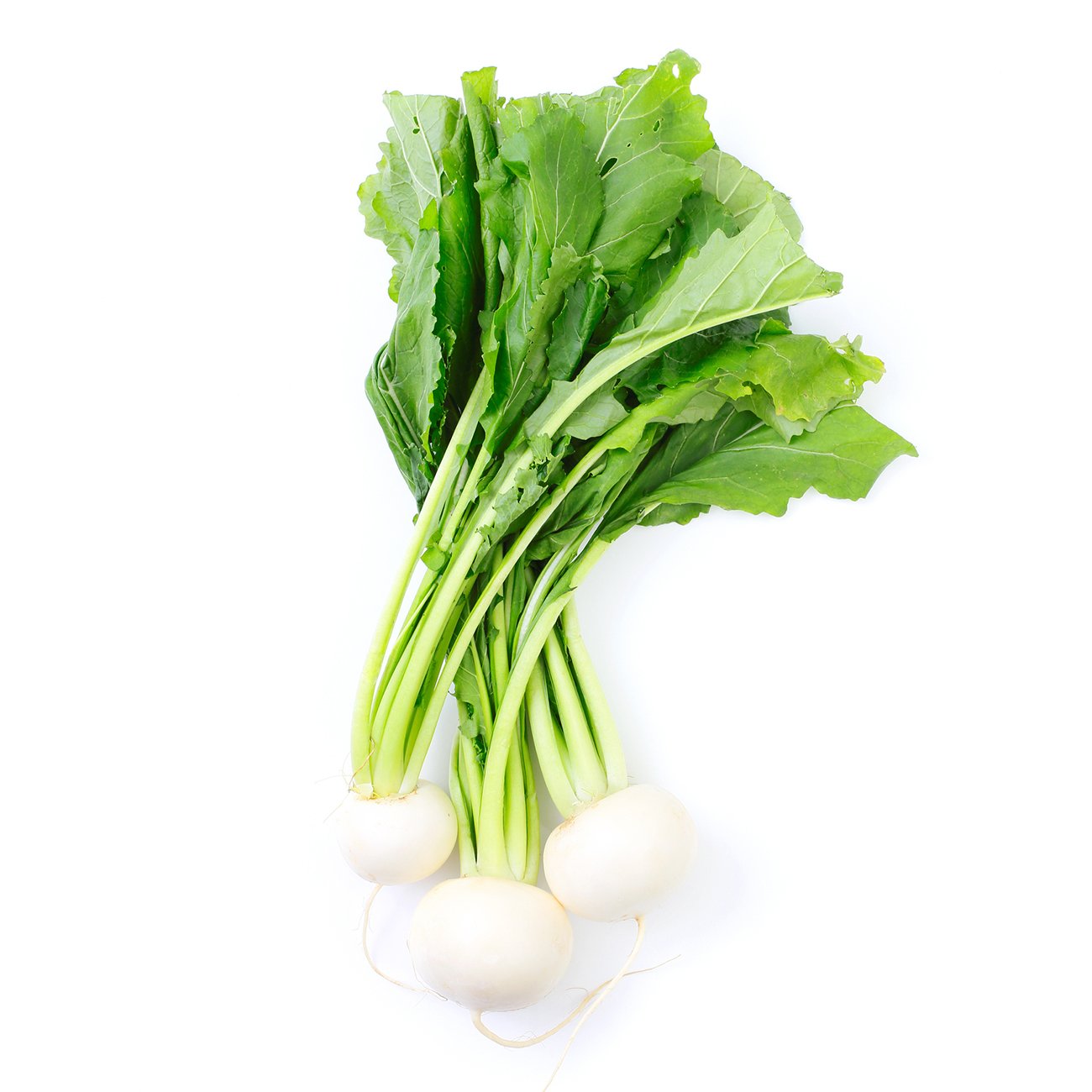Celeriac
A versatile root vegetable with a deliciously distinctive taste.
Alternative Name
Celery root, knob celery, marsh parsley, smallage, turnip-rooted celery, wild celery
Scientific Name
Apium graveolens var. rapaceum
Health benefits
Take the texture of a potato and combine with the flavour of celery and parsley: that's celeriac. This root vegetable looks like a gnarly turnip and while it is related to celery, it is not the root of the celery plant. Like potato, it is very versatile: mash, grate and eat raw, roast, bake or steam.
-
Harvesting
Celeriac is harvested when it meets the market needs for size. Quality characteristics include firm texture and tender flesh. Soft, spongy roots should be avoided.Postharvest storage temperature
Celeriac benefits from pre-cooling; however, since it has a relatively low respiration rate, this must be balanced with the desired storage time before marketing. Optimum temperature for storage of celeriac is 0°C and it may store for 90–150 days. Higher temperatures reduce its shelf life (8 days at 20°C). Celeriac is not chilling sensitive and it is compatible with ice cooling.Controlled atmosphere storage
Controlled atmospheres are not very effective for prolonging storage life or maintaining quality. There may be slight benefit in storing at 2–3% O2, 2–3% CO2 (at 0°C). Controlled atmosphere does not provide any advantage over cold storage.Ethylene sensitivity
Celeriac produces very low levels of ethylene and is slightly sensitive to it. Therefore, it should not be stored with other fruits or vegetables that produce high levels, which may cause toughening of the root. Celeriac is not compatible in mixed storage as it absorbs odours from other highly aromatic fruits and vegetables.Humidity storage
Celeriac should be stored at 90–100% relative humidity.Disease & infection
Decay may become a problem if celeriac is stored in a warm, humid environment. Among the parasitic diseases, the most important is rot caused by sclerotinia. The fungus that causes this rot affects the bulb covering it with a white felt. This disease may attack during cultivation and poor hygiene may predispose the bulbs to its development. -
Peel and remove outer before use. Keep in vegetable drawer of fridge wrapped in plastic.

You might also like
Veggy tip
Use celeriac raw in salads or grate and add at the end of a stir-fry to minimise cooking time and loss of nutrients.



